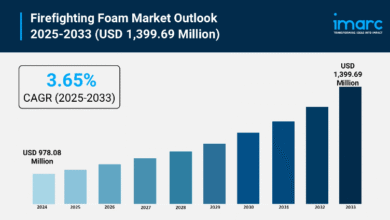AI and Content Generation: Opportunities and Limitations

Artificial intelligence has revolutionized how businesses approach marketing, creativity, and communication. One of its most transformative applications is in the realm of content creation. From automated blog posts to AI-generated videos and personalized ad copy, AI tools are reshaping the landscape at a speed that marketers, writers, and business owners cannot ignore. Yet, as with any powerful technology, the opportunities are immense but so are the challenges. Understanding both sides is essential for leveraging this technology effectively without compromising on authenticity or strategic goals.
The Rise of AI in Content Creation
The idea of machines writing content is no longer futuristic speculation; it is today’s reality. AI-powered platforms use natural language processing and machine learning models to produce text that can mimic human tone, style, and structure. Tools such as ChatGPT, Jasper, Writesonic, and Copy.ai have become mainstream, allowing businesses to generate blog articles, social media captions, and product descriptions in minutes.
For marketers, the appeal is obvious. Content creation has traditionally been one of the most resource-heavy aspects of digital marketing. AI shortens this process dramatically, delivering drafts in seconds and freeing teams to focus on editing, creativity, and strategy. In addition, AI models can analyze data at scale to predict what type of content resonates with audiences, offering a blend of creativity and precision that is difficult to achieve manually.
However, the efficiency and scalability that AI brings must be balanced against the need for originality, accuracy, and ethical use. This duality is at the heart of the debate about AI and Content Generation.
Opportunities Presented by AI and Content Generation
One of the biggest opportunities lies in scaling operations without ballooning costs. Small businesses and startups that could not previously afford large content teams can now publish regularly and compete with bigger players. AI ensures consistency in voice and branding, particularly when businesses are creating vast amounts of content across multiple channels.
AI also opens the door for advanced personalization. By analyzing customer behavior, AI tools can generate individualized messages and product recommendations, creating a sense of one-to-one communication at scale. This capability is especially powerful in email marketing, e-commerce, and customer engagement campaigns, where personalized content drives conversions.
Another major opportunity is the democratization of creativity. Professionals who are not traditionally skilled in writing, design, or video editing can now use AI to bring their ideas to life. For example, a marketer without design experience can use AI image generators to create custom visuals, or a teacher can use AI tools to design educational content more effectively.
AI also accelerates research and ideation. Instead of spending hours brainstorming, content creators can feed prompts into AI systems and receive multiple directions within minutes. This does not replace human creativity but acts as a catalyst, giving teams a strong starting point and freeing them to refine ideas instead of struggling to generate them.
Limitations and Challenges of AI-Driven Content
While the advantages are significant, AI-driven content also comes with notable limitations that must be addressed. A key concern is originality. Since AI systems are trained on vast amounts of existing data, their outputs can sometimes mirror what already exists online. This raises the risk of repetitive or derivative content that fails to stand out.
Accuracy is another challenge. AI can produce text that sounds convincing but may include factual errors, outdated statistics, or misrepresented information. For industries such as healthcare, finance, or law, where accuracy is critical, relying on AI without human oversight can be risky.
There is also the issue of brand authenticity. Audiences are becoming more aware of AI-generated material, and over-reliance on automation may dilute a brand’s voice. Readers still crave a sense of human connection, and content that feels too mechanical can undermine trust.
Ethical concerns further complicate the picture. Questions around intellectual property, plagiarism, and transparency are gaining attention as AI systems become more widely used. If AI-generated content pulls too heavily from existing works, businesses may face legal or reputational issues.
Finally, while AI lowers the barrier to entry for content creation, it also increases competition. With so many businesses able to publish quickly, the digital space risks becoming saturated with content that is fast but shallow. To stand out, companies must focus on adding human creativity and strategic depth to complement AI’s capabilities.
Striking the Right Balance Between AI and Human Creativity
The key to leveraging AI effectively lies in adopting a hybrid approach. Businesses should treat AI as an assistant rather than a replacement. This means using AI to handle repetitive, time-consuming tasks while relying on human expertise for creativity, storytelling, and emotional connection.
For instance, a blog draft generated by AI can serve as a starting point, but the final version should reflect the company’s unique perspective, tone, and insights. Similarly, AI can analyze data to suggest topics, but human marketers should decide which ones align best with the brand’s long-term vision.
Training and upskilling also play an important role. Teams need to understand not only how to use AI tools but also how to critically evaluate their output. This is where structured learning programs, such as an AI Marketing Course, can help professionals stay ahead in an evolving landscape. With the right knowledge, marketers can maximize efficiency without compromising on quality.
The Future of AI in Content Generation
Looking ahead, AI will only grow more sophisticated. Emerging models are beginning to handle multimodal tasks, combining text, images, and even video into unified content experiences. As personalization engines become smarter, we can expect hyper-targeted content strategies that are more aligned with consumer behavior than ever before.
At the same time, regulation and best practices will become increasingly important. Governments, tech companies, and marketers will need to collaborate on guidelines to ensure AI-driven content respects intellectual property, promotes transparency, and avoids misuse.
Ultimately, the most successful businesses will be those that embrace AI as a partner rather than a replacement. They will recognize that while AI can accelerate production, human insight remains the heart of compelling content. The brands that combine efficiency with authenticity, data with creativity, and technology with empathy will emerge as leaders in the new content era.
Conclusion
AI has opened a new chapter in the evolution of content marketing. The opportunities it brings—speed, personalization, cost savings, and creative support—are undeniable. Yet, its limitations in originality, accuracy, and authenticity remind us that it cannot function in isolation. Success will depend on finding the right balance between automation and human creativity, ensuring that content remains not only efficient but also meaningful and trustworthy.
In this dynamic space, businesses that approach AI with both enthusiasm and caution will be best positioned to thrive. AI and Content Generation is not about replacing humans but about empowering them to achieve more, faster, and with greater impact. Those who master this balance will not just keep pace with the future of digital marketing—they will shape it.




